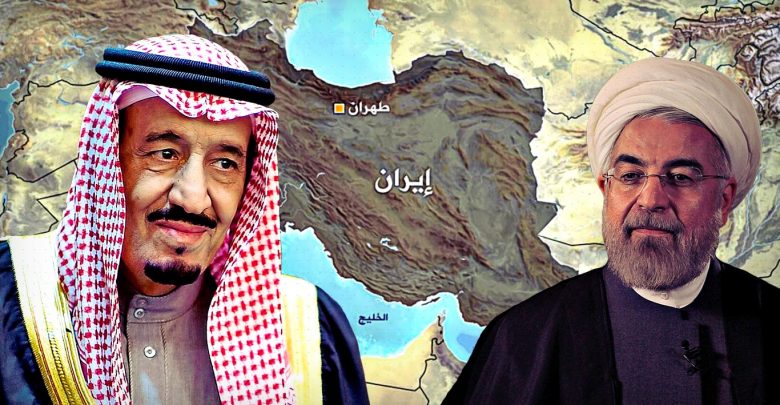
Saudi, Iran & different visions
Saudi, Iran & different visions
Iran’s foreign policy is based on a range of ideological and ethnic factors that it employs in its struggle with Saudi Arabia for penetrating the regional countries. The Iranian ideological factor appears in the promotion and spread of the Shiite Jaafari faith in the countries of the region in many ways, most notably through supporting its loyal armed militias such as Bashar al-Assad’s regime in Syria, Hezbollah in Lebanon, the Houthis in Yemen, Al-Wefaq in Bahrain, and the Popular Mobilization in Iraq.
One of the main reasons that led to this strategy is Iran’s desire to achieve external expansion and defend the national and cultural Persian identity. In fact, what Iran is doing in some countries in the Middle East clearly shows the extent to which the Iranian authorities have exploited this factor in the foreign expansion. In addition, Iran is attempting to dominate the ethnic minorities in neighboring countries to use them as bargaining cards in its conflict with the West.
The Iranian policies towards Sunni-majority countries in the region put it in fierce rivalry and continuing tension with its neighbor, Saudi Arabia. Although Saudi Arabia claims that it stands in the face of the Iranian sectarian project to protect the Sunni-majority regional countries, however, the Kingdom adopts a set of mostly uncalculated and reckless policies and tactics that have contributed – whether intentionally or unintentionally – to creating a rift in the Sunni camp. Most notably among these policies are:
– Saudi Arabia’s criminalization of the Muslim Brotherhood, and providing support to Egypt’s military coup against the Brotherhood (Sunnis) in July 2013, though they were democratically elected.
– Designating the Islamic Resistance Movement (Hamas) in Palestine (Sunnis) as a terrorist organization (through a statement by Saudi Ambassador to Algeria Sami bin Abdullah al-Saleh in July, 2017). Also, Saudi Arabia has contributed to the blockade imposed on the Gaza Strip for several years.
– Imposing a suffocating siege on the “Sunni” state of Qatar and pushing it to re-establish its relations with Iran.
– Maintaining relations at the lowest levels with the “Sunni” Turkey after differences following Egypt’s military coup.
These hostile Saudi policies towards major countries and actors in the region’s Sunni camp contributed to the creation of a big rift in the Sunni-Sunni ranks, and gave the Iranian project in the region a push forward rather than working to restrain it. Also, the Saudi conflict with Turkey and Qatar contributed to geographical and military deterioration of the Syrian opposition in favor of the Syrian regime and its Iranian allies as well as other sectarian militias which captured large parts of Syria. Also, the Saudi policies prompted Turkey, Qatar and even Hamas movement to re-formulate their relations with Iran away from sectarian and political friction, for protecting their interests.
On the other hand, the Saudi-Zionist rapprochement – especially the reported secret visit of Saudi Crown Prince Mohammed bin Salman to Tel Aviv, visits of Saudi elites and officials such as the retired Maj. General Anwar Eshki and former Saudi Intelligence Chief Prince Turki al-Faisal – led to the promotion of Iran’s slogans regarding the resistance, anti-Zionism, and rejection of the Israeli occupation of the Arab territories, although they have remained mere slogans for decades.
These policies of Saudi Arabia against the Sunni actors in the region were not in fact less dangerous to the Sunnis than Iran and its policies, and they even gave Iran strong cards to penetrate the region.
The Saudi hostility towards the Muslim Brotherhood, Hamas movement, and the State of Qatar by classifying them as terrorists or supporters of terrorism prompted them to re-establish relations of rapprochement and cooperation with Iran on the basis of interest and pragmatism, not on a sectarian basis, which is the positive side of the matter – and of course it was not one of the Saudi objectives.
However, the negative side in this issue is the fragmentation of the Sunni countries in the face of the Iranian project in the region, in addition to the aggravation of the Syrian, Yemeni, and Libyan crises, and the absence of clear solutions of these files in the near future(1 ).
—————
Footnotes:
1 The views expressed in this article are entirely those of the author’s and do not necessarily reflect the views of EIPSS




